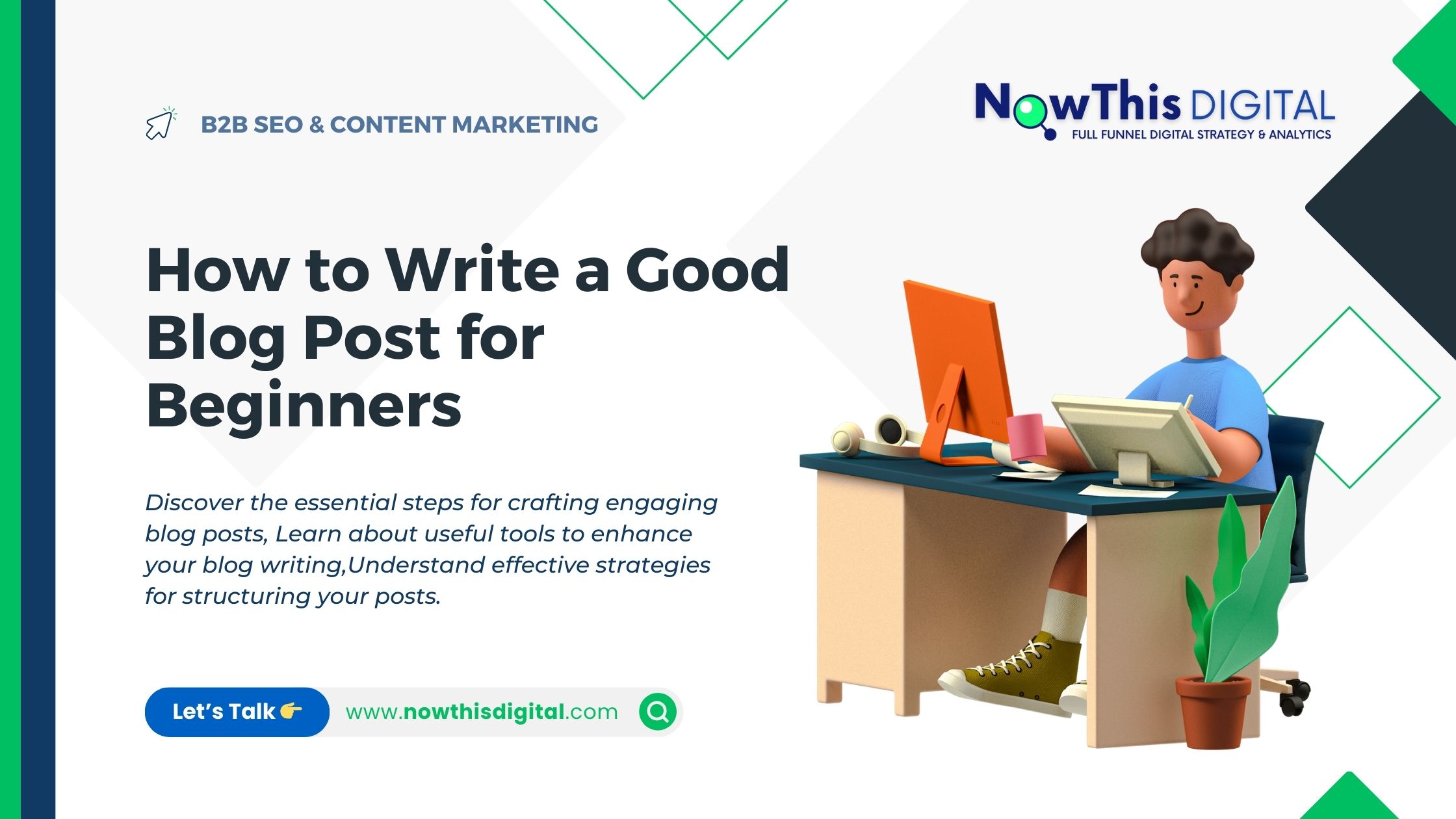Blog Post for Beginners
How to Write a Good Blog Post for Beginners: A Step-by-Step Guide
Are you new to blogging and unsure where to start? Writing a good blog post can be a daunting task, especially if you’re new to the world of content creation. But don’t worry, with these simple steps, you can create engaging and informative blog posts that resonate with your audience.
How to Write a Good Blog Post for Beginners, Step 1: Choose a Topic
Before you start writing, you need to decide on a topic. This might seem obvious, but it’s crucial to choose a topic that resonates with your audience and aligns with your blog’s purpose. Here are a few tips to help you choose a topic:
- Know your audience: Understand what your audience is interested in and what problems they’re trying to solve. This will help you create content that speaks directly to them.
- Research popular topics: Look at trending topics and popular blogs in your niche to get inspiration for your own content.
- Keep it simple: Avoid overly complex or technical topics, especially if you’re just starting out. Focus on topics that are easy to understand and relate to.
How to Write a Good Blog Post for Beginners, Step 2: Plan Your Content
Once you have a topic, it’s time to plan your content. This involves creating an outline and deciding on the structure of your blog post. Here are a few tips to help you plan your content:
- Create an outline: Break down your topic into smaller sections or subtopics. This will help you organize your thoughts and ensure your blog post flows logically.
- Decide on the structure: Will your blog post be a listicle, a tutorial, or a personal story? Choose a structure that fits your topic and audience.
- Keep it concise: Aim for a blog post that’s around 500-700 words. This is long enough to provide value but short enough to keep your readers engaged.
How to Write a Good Blog Post for Beginners, Step 3: Write Your Blog Post
Now it’s time to start writing your blog post. Here are a few tips to help you write effectively:
- Use a conversational tone: Write in a friendly, approachable tone that resonates with your audience.
- Use clear and concise language: Avoid using jargon or overly technical terms that might confuse your readers.
- Use headings and subheadings: Break up your content with headings and subheadings to make it easier to read.
- Use visuals: Add images, videos, or infographics to make your blog post more engaging and shareable.
How to Write a Good Blog Post for Beginners Step, 4: Edit and Proofread
Once you’ve written your blog post, it’s time to edit and proofread. Here are a few tips to help you refine your content:
- Take a break: Step away from your blog post for a few hours or overnight to clear your mind and come back to it with fresh eyes.
- Check for grammar and spelling errors: Use tools like Grammarly or Hemingway Editor to help you catch any mistakes.
- Get feedback: Ask a friend or fellow blogger to review your blog post and provide feedback.
- Make revisions: Based on the feedback you receive, make any necessary revisions to improve your blog post.
How to Write a Good Blog Post for Beginners, Step 5: Optimize for SEO
Finally, it’s time to optimize your blog post for search engines. Here are a few tips to help you improve your SEO:
- Use relevant keywords: Include relevant keywords in your blog post title, headings, and meta description.
- Use meta tags: Add meta tags like title tags and meta descriptions to help search engines understand your content.
- Use internal and external linking: Link to other relevant blog posts on your site and to external sources to add credibility and depth to your content.
- Use alt text for images: Add alt text to your images to help search engines understand what they’re about.
Conclusion
Writing a good blog post for beginners requires some planning and effort, but with these simple steps, you can create engaging and informative content that resonates with your audience. Remember to choose a topic that resonates with your audience, plan your content, write in a conversational tone, edit and proofread, and optimize for SEO. By following these steps, you can create a blog post that drives traffic, builds your brand, and establishes you as an authority in your niche. Happy blogging











